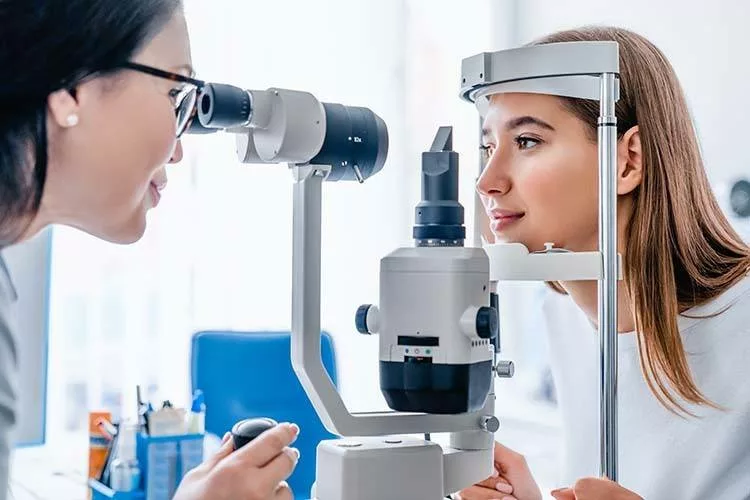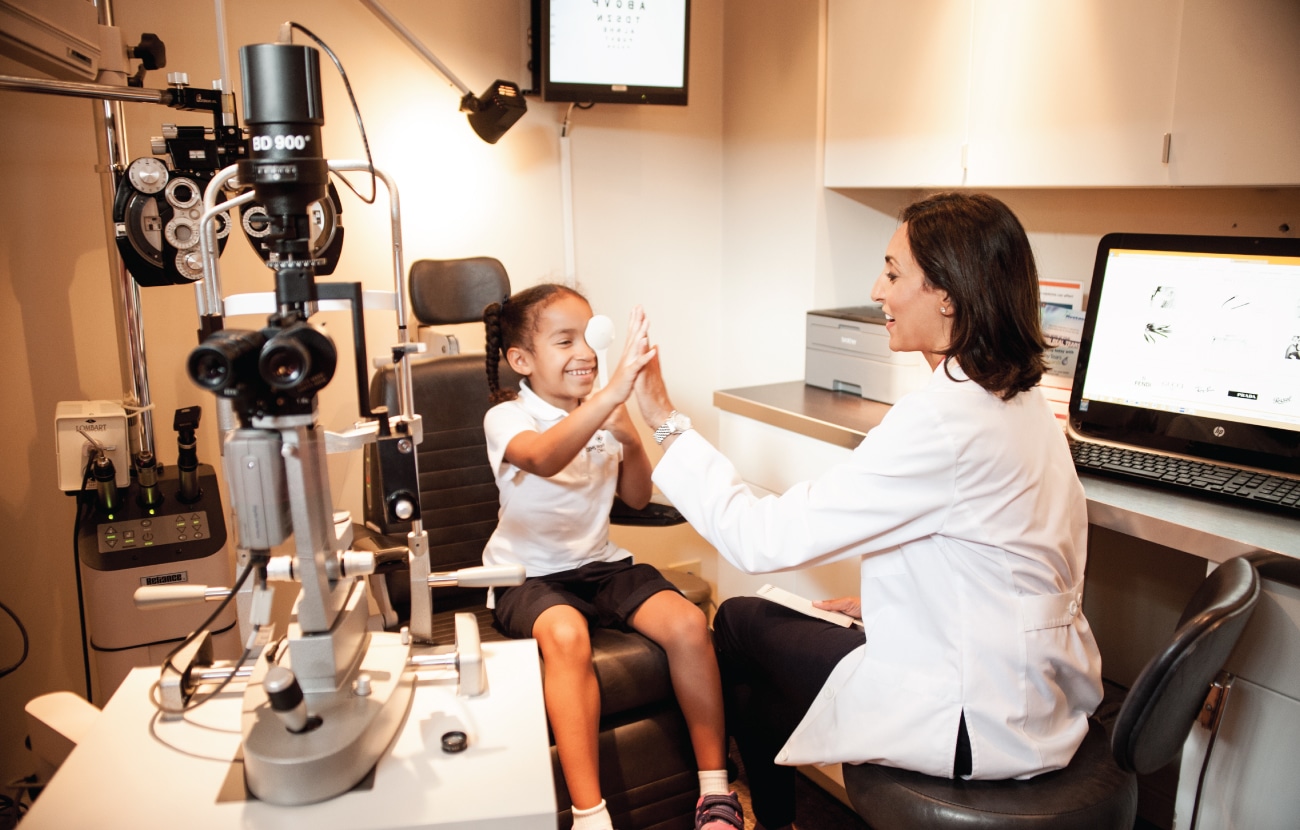The Comprehensive Eye Exam: What to Expect Throughout Your Visit to the Eye Physician
A browse through to the eye doctor for an extensive eye exam is more than a regular examination; it is a critical action in guarding your aesthetic wellness. From the preliminary discussion of your clinical background to the precision of the visual skill examination, each part of the examination offers a particular purpose. Yet what specifically happens during the eye health and wellness evaluation, and how does it affect the prescription process? Understanding these components is crucial for those that wish to maintain ideal eyesight. As we check out each part, the value of follow-up recommendations will also come to be clear.
First Appointment
The initial consultation throughout an eye exam acts as a critical foundation for comprehending a person's visual wellness requirements. This stage establishes the tone for the whole assessment procedure, enabling the optometrist to collect essential info concerning the patient's case history, lifestyle, and certain vision issues. By thoroughly examining any kind of pre-existing conditions, medications, or previous surgeries, the eye care expert can customize the exam to resolve individual demands successfully.

Moreover, the preliminary assessment is a chance for clients to voice any kind of concerns or issues, cultivating a joint connection with their health care copyright. This communication not only makes certain that the person feels educated and comfortable however likewise encourages them to take part actively in their eye health and wellness administration. Collectively, these discussions allow the optometrist to design a tailored examination plan, guaranteeing optimum treatment and accurate diagnosis.
Aesthetic Skill Examination
Beginning the core parts of an eye assessment, the visual skill test is developed to examine the sharpness and clearness of a person's vision. This vital analysis assists figure out exactly how well a person can discern letters or signs at a standardized range, normally utilizing a Snellen chart (Optometrist Riverside). The graph consists of rows of letters that reduce in size from top to base, with the patient positioned at a normal range of 20 feet
Throughout the examination, the person is asked to cover one eye and read out loud the smallest line of letters they can see plainly. This process is duplicated for the other eye. The results are videotaped as a fraction, with 20/20 vision indicating typical visual skill-- where the person can see at 20 feet what an individual with normal vision can see at that distance.
The visual skill test additionally identifies potential refractive mistakes such as hyperopia, nearsightedness, or astigmatism, which may require corrective lenses. By establishing a standard of aesthetic performance, the test is an important diagnostic device that assists the eye care professional in creating a proper treatment strategy customized to the person's one-of-a-kind visual requirements.
Eye Wellness Evaluation
Following the aesthetic skill test, a comprehensive eye health and wellness analysis is carried out to ensure the overall well-being of the eyes. This important segment of the eye examination entails a thorough evaluation of both the interior and outside structures of the eye.
Next, focus changes to the inner frameworks. Via making use of ophthalmoscopy or fundus digital photography, the retina, optic nerve, and capillary are thoroughly evaluated. This step is vital for determining problems such as retinal detachment, glaucoma, or diabetic person retinopathy. In a lot of cases, pupil expansion is performed to improve visibility of the interior eye frameworks, although this might lead to short-lived light level of sensitivity for the patient.
Additionally, intraocular pressure is determined to evaluate for glaucoma danger. This is normally done making use of tonometry, which can find elevated stress levels that might suggest potential damages to the optic nerve. Collectively, these evaluations develop a comprehensive analysis to maintain ocular health.
Refraction and Prescription
Refraction is an innovative procedure performed by eye treatment specialists to figure out the precise lens power needed to deal with refractive errors such as myopia, astigmatism, hyperopia, and presbyopia. The objective of this procedure is to assess just how light bends as it passes through the eye, enabling the practitioner to determine whether corrective lenses are needed for enhanced aesthetic acuity.
Throughout the refraction procedure, the individual is asked to look through a phoropter, a tool which contains numerous lenses. The practitioner will systematically transform these lenses and ask the individual to contrast quality in between choices until the finest feasible vision is achieved. This treatment is essential in crafting an exact prescription that defines the suitable lens power for spectacles or call lenses.
The visit this site prescription derived from this treatment not only enhances vision but likewise works as a foundation for picking appropriate restorative eyewear. It is necessary to guarantee that prescriptions are routinely upgraded, as adjustments in vision can take place over time, emphasizing the significance of regular eye examinations. This thorough interest to information helps preserve clear, comfy vision in every day life.
Follow-Up Suggestions

Throughout a follow-up check out, the eye physician will carry out a collection of examinations to assess aesthetic acuity and check for any modifications in vision that may require an update to the prescription. In addition, the follow-up supplies a possibility to go over any type of pain or concerns experienced with present eyewear. Adjustments can be made to guarantee comfort and efficacy, whether with lens modification or frame adjustments.
For individuals with ongoing conditions such as glaucoma, diabetes-related eye concerns, or macular deterioration, even more frequent follow-ups may be necessary. These visits are vital for taking care of and possibly slowing down the progression of eye disease. Sticking to these referrals can considerably add to preserving visual health and wellness and stopping long-lasting issues.
Final Thought
The detailed eye exam is an essential process for maintaining aesthetic health, incorporating a thorough analysis of medical background and vision problems. Key parts include the aesthetic skill test, which assesses sight clearness, and the eye health and wellness assessment, which takes a look at the overall problem of the eyes.
A visit to the eye physician for a thorough eye test is more than a regular exam; it is a vital action in protecting your aesthetic wellness.Kicking off the core parts of an eye exam, the aesthetic skill test is made to examine the intensity and quality of a person's vision.Adhering to the visual skill test, a thorough eye health evaluation is performed to guarantee the total well-being of the eyes. Full Report These check outs enable the eye treatment expert to keep track of modifications in vision, update prescriptions, and analyze the total wellness of the eyes. Trick parts consist of the visual acuity test, which assesses vision clearness, and the eye this hyperlink health evaluation, which analyzes the total condition of the eyes.